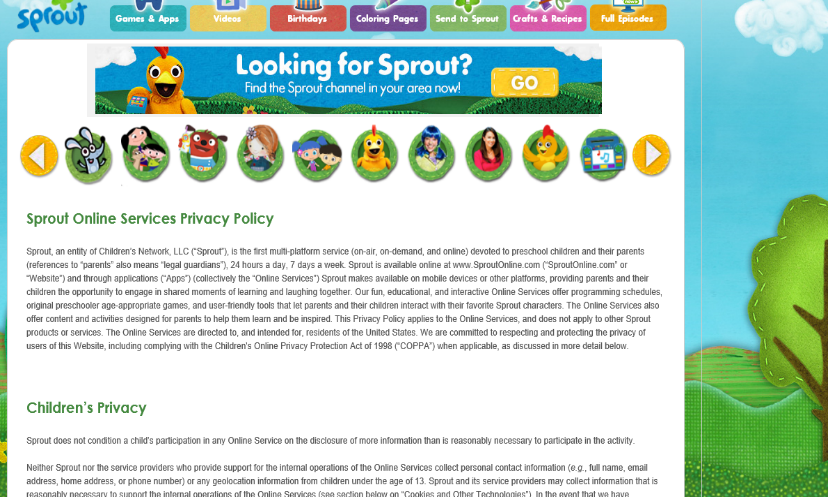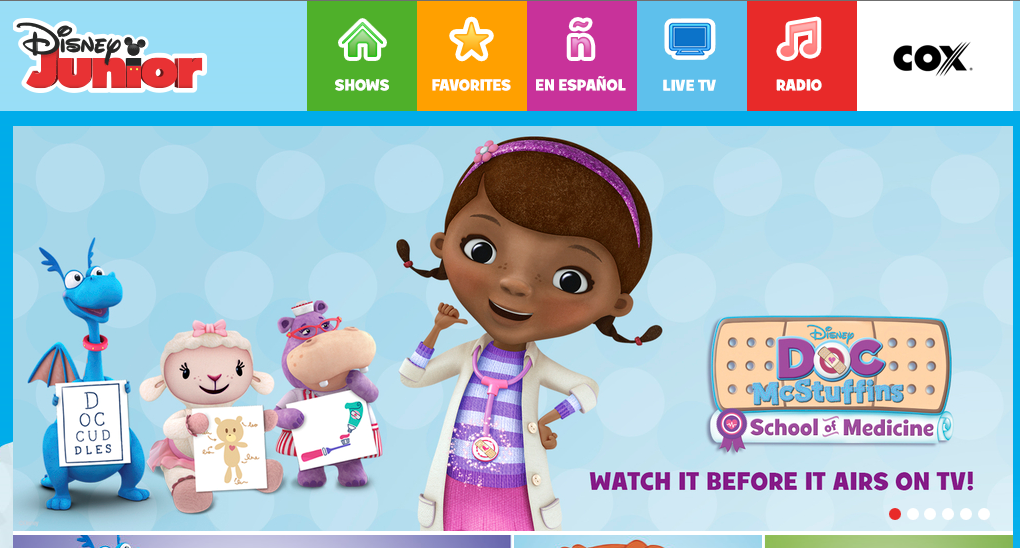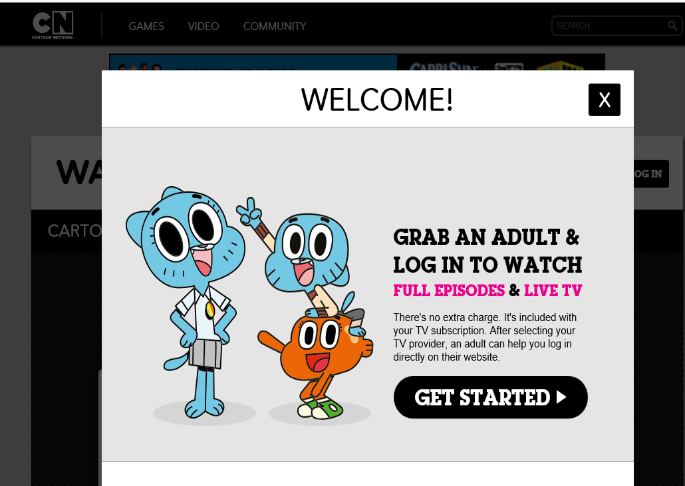Children’s Programming User Experience Recommendations - October 2014
Children’s Online Privacy Protect Act (COPPA)
How to Comply with Children’s Online Privacy Protection Act?
The
Children's Online Privacy Protection Act, (COPPA ) effective April 21, 2000, applies to the online collection of personal information from children under 13. The new rules spell out what a Web site operator must include in a privacy policy, when and how to seek verifiable consent from a parent and what responsibilities an operator has to protect children's privacy and safety online.
The Federal Trade Commission (FTC) staff prepared
this guide to help you comply with the new requirements for protecting children's privacy online and understand the FTC's enforcement authority. Guidelines include:
• Who must comply
• Collecting and handling personal information
• Privacy notice placement and content
• Parental notification and consent; notice of material changes
• Public and third party disclosures
• Parental access verification, revoking and deletion
• Timing, safe harbors and enforcement
Examples of privacy policies designed to address COPPA issues:

User Experience Recommendations
Design Recommendations
“Re-skinning” an adult interface doesn’t always work
• The UX interface should be highly visual (image, character and icon based); when text instructions are required, keep to as few key words as possible
• Preschoolers require even simpler navigation – they often cannot read, and need larger buttons to accommodate their limited dexterity
• Menus and navigation should be simple, clean and easy to scroll through; avoid many drop-downs, sub-navigation menus)
• Networks offering a variety of programming should create a Kids section, providing quick, easy access that parents know contains safe and appropriate content.
• Provide simple tools that allow parents to set preferences and block content by age/content ratings
• Provide the ability for parents to set individual profiles for family members to help filter inappropriate content.
Search and Discovery
• Kids appreciate the ability to browse and view content organized by show; categories like “new” and “popular” are also an appreciated method for categorizing shows.
• Kids like relevant recommendations based on what they have watched; as well as a saved viewing history so they can go back to favorite episodes
• A search box may be useful older kids, provided that it yields accurate results
• Voice search is helpful for younger kids; MVPD access points, parents would prefer that searches in the kid section only yield kid-friendly results

Sign In – Social Media
The FTC has taken the position that child-directed sites and services should not have social plug-ins like Facebook, Twitter and others that currently are designed for teens and adults. Some safe harbor programs also have recommended age-gating (asking age or DOB) before users provide their distributor login IDs and data as a best practice (not a legal requirement) and an option to add protection. Adding an age-gate also may be one method a site with a wide range of users can still offer social plug-ins for older users. Consult with your legal counsel about whether this is an option you should consider.
Sign In - Messaging
• Include clear messaging for iframe environment to indicate that the distributor is the party who is collecting login IDs and data
• Communicate how any parental control restrictions do or don’t work – parents need to know
• Prevent kids from moving to another programming site that may be inappropriate by implementing persistent Sign In or other protective measures
• Sign In is required for PPV or anything transactional
• Clearly communicate the ease of signing in and the ability to watch TV programming on a computer, tablet or smart phone is a benefit included with their TV subscription.
• Use short video clips to walk kids (and adults) through the Sign In process and what the benefit is.
• For younger kids (e.g. Disney Junior viewers), parents are often involved in the initial download process; communicate the benefits in this first interaction
• Remind older kids (10+) to get a parents’ permission and help, when they choose to download the TVE apps themselves.
• Recommend co-branding this page. so it is clear they are logging in to access kid-friendly content, and /or including some high-level info on the benefits
Sign In – Advertising
• If ads are present on the log in page, any legal concerns about inappropriately-placed ads will be directed to the ad serving system or the owner of the page where the ad is being served, particularly if legal or self-regulatory restrictions are violated such with products like cigarettes, alcohol, etc.) but the children programmers have PR and brand considerations too and prefer that no ads be served on sites and apps targeted to kids
• If any ads are served, the distributor should make the ads age appropriate and family-friendly. Ex. Ads for alcohol, R-rated movies, local adult establishments should not appear on kids sign in pages or content being viewed.
For a printable version, CLICK HERE
 Considerations for Children
Considerations for Children






